The spring perennial season may seem like it’s a long way away from February, but it’s closer than you think!
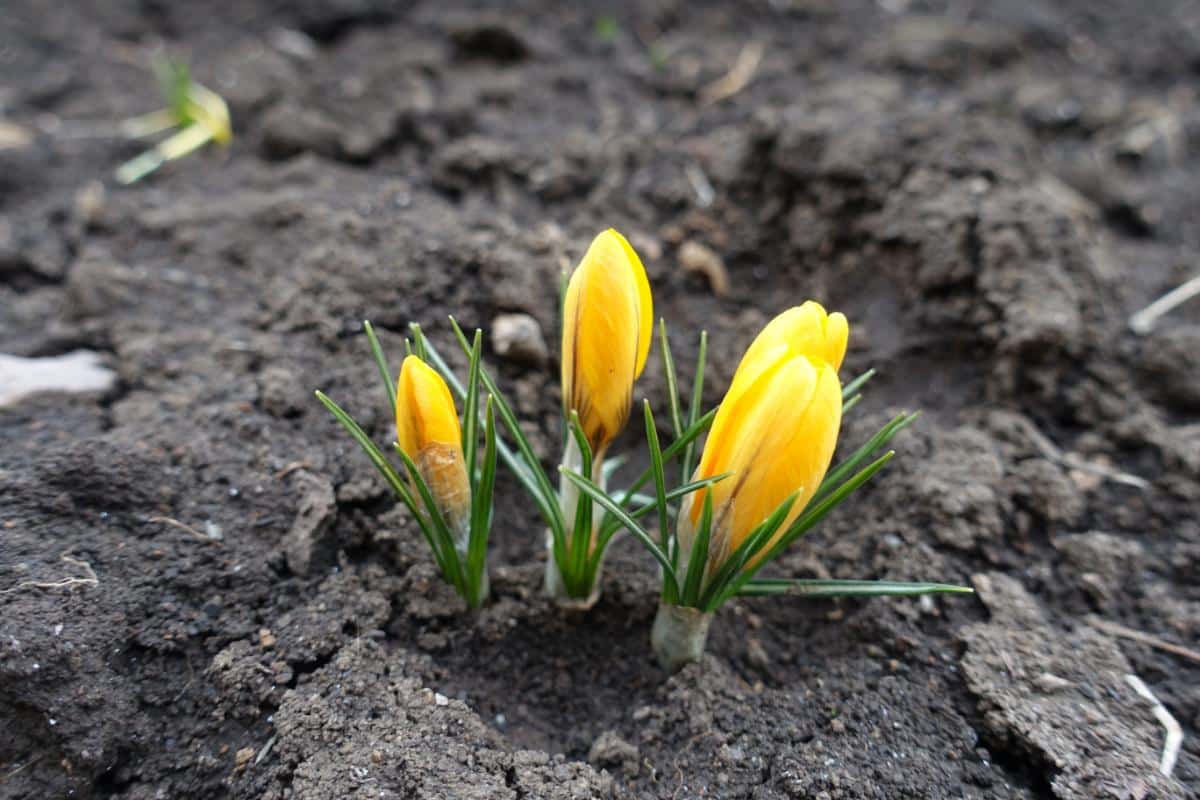
In fact, for perennials*, there is a lot of propagating and planting that can – and should – be done this month. Let’s take a look at what perennials you should get started in February.
*As you work through these lists, you’re bound to find things that you don’t consider perennials. That’s because almost all plants are perennials somewhere, but they’re grown as annuals in a lot of other locations. Don’t fret too much about it since the seed and starting part of the plant’s life are pretty much the same. Just be aware next fall if the plant will need protection or overwintering indoors to keep it going where you live or if you just plan to grow it as an annual.
Jump to:
- Start Perennials Early
- 1. Perennial Seeds that Need Cold Stratifying
- 2. Perennial Herbs to Cold Stratify
- 3. Treat All Bulbs that Need Cold Stratification
- 4. Winter Sowing Perennials
- 5. Edible Perennial Plants
- 6. Bulbs for Forcing and Flowering
- 7. Indoor Herbs and Perennials to Propagate for Growing Outside
- 8. Dormant Cuttings for Propagation
- 9. Forsythia, Quince, and Other Cuttings for Forcing
- It’s [Almost] Never too Early to Start Perennials
Start Perennials Early
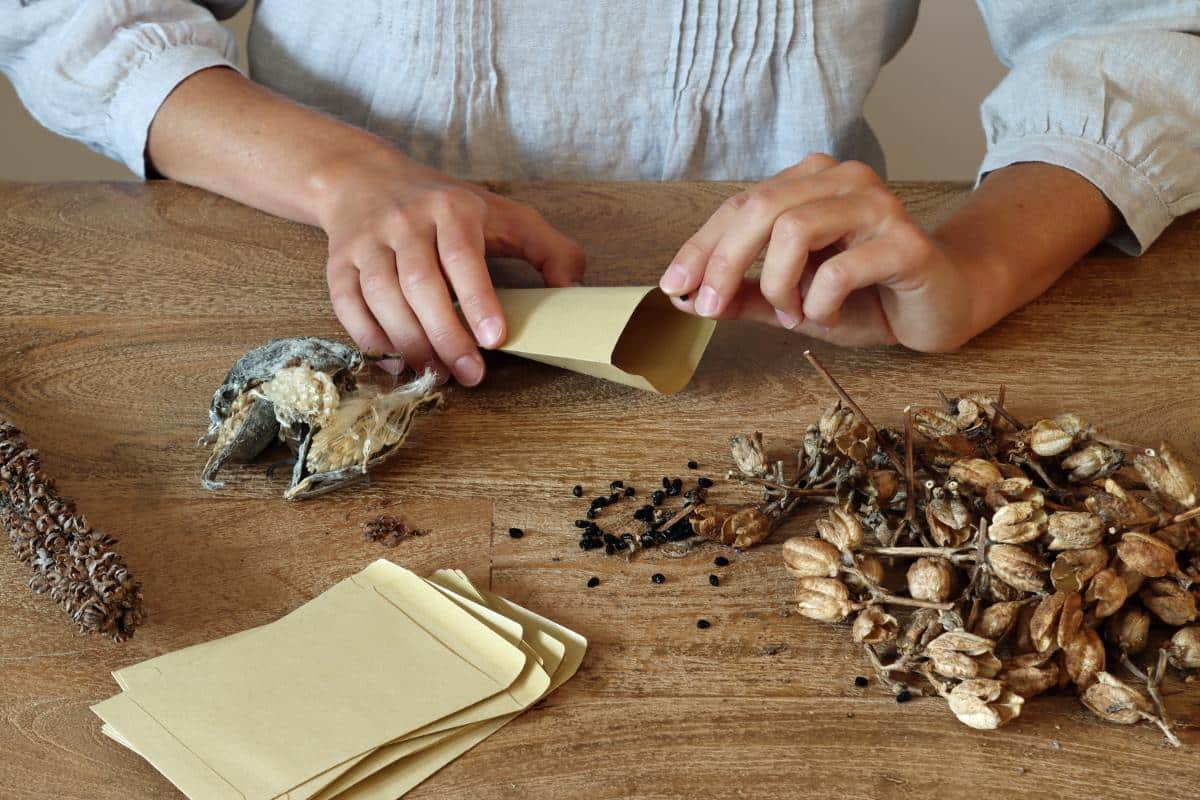
Perennials should be started early, especially if you’re starting them from seed. In fact, perennials of all sorts are the first things you should be starting out of the types of plants you’re starting from seed.
Perennials take longer to germinate than most annuals, so they need more days (weeks) just for this segment of the growing process.
Many perennials need cold stratifying (and if you’re not sure, cold stratification won’t hurt most perennials anyway).
Cold stratification, which is basically an extended period of time in which seeds or bulbs are exposed to cold, freezing, or near-freezing winter temperatures, extends the total planting and growing time by months. On average, seeds, bulbs, and tubers that require cold stratification need to experience that cold for between 30 and 90 days.
Perennials are also slow growers once they do germinate. That’s another reason to start them early, so they will be large enough for transplanting and have a strong enough root system for the move come spring.
February is a good month to start perennials from seed; even earlier in January would not be a bad idea. For the best plant starts and the strongest transplants, you really do want to start all your perennial seeds by the end of February.
It’s not all about seeds, though. There are perennial bulbs and cuttings to tend to in February, too.
Here is a list of the types of perennials you should start in February, along with some recommendations:
1. Perennial Seeds that Need Cold Stratifying
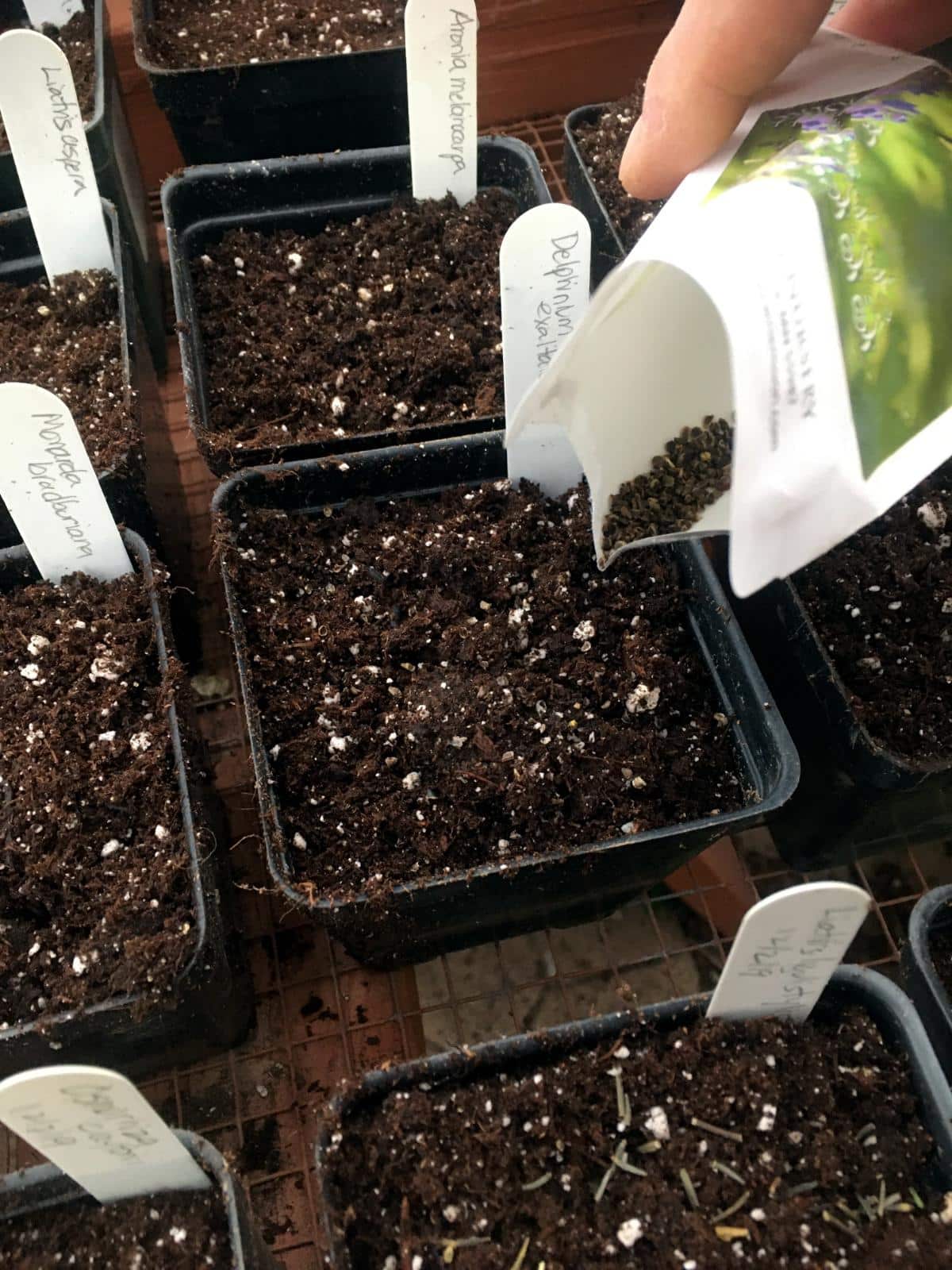
The first thing you should tackle are seeds that need cold stratifying. Even though there is no real growth going on during the stratification (or cold treatment) period, this step takes time. If you’re not stratifying seeds by February, you’re risking running out of it (time, that is).
Cold stratification can be done indoors or out. Inside, you’d use your refrigerator or freezer (or an unheated shed or garage). Refrigeration gives you more flexibility, and you can manipulate the stratification time by keeping them in the fridge or freezer for as long as they need, even if the temperatures are creeping up outdoors.
Even with artificial cold treatment, you’ll want to start stratifying those seeds as soon as possible because after they’re treated, they’ll need to then sprout and grow. For perennials, growing happens slowly.
Some popular perennial seeds that need and/or benefit from cold stratifying include:
- Milkweed
- Lupine
- Pincushion flower (Scabiosa)
- Perennial sunflowers
- Coneflowers (not all varieties, but any can of them can benefit)
- Larkspur
- Primrose
- Rudbeckia
- Hyssop
- Catmint
- Phlox
- Poppies
- Goldenrod (once considered a weed, it’s becoming a more and more popular ornamental fall pollinator plant; and no, it does not usually cause allergies!)
2. Perennial Herbs to Cold Stratify
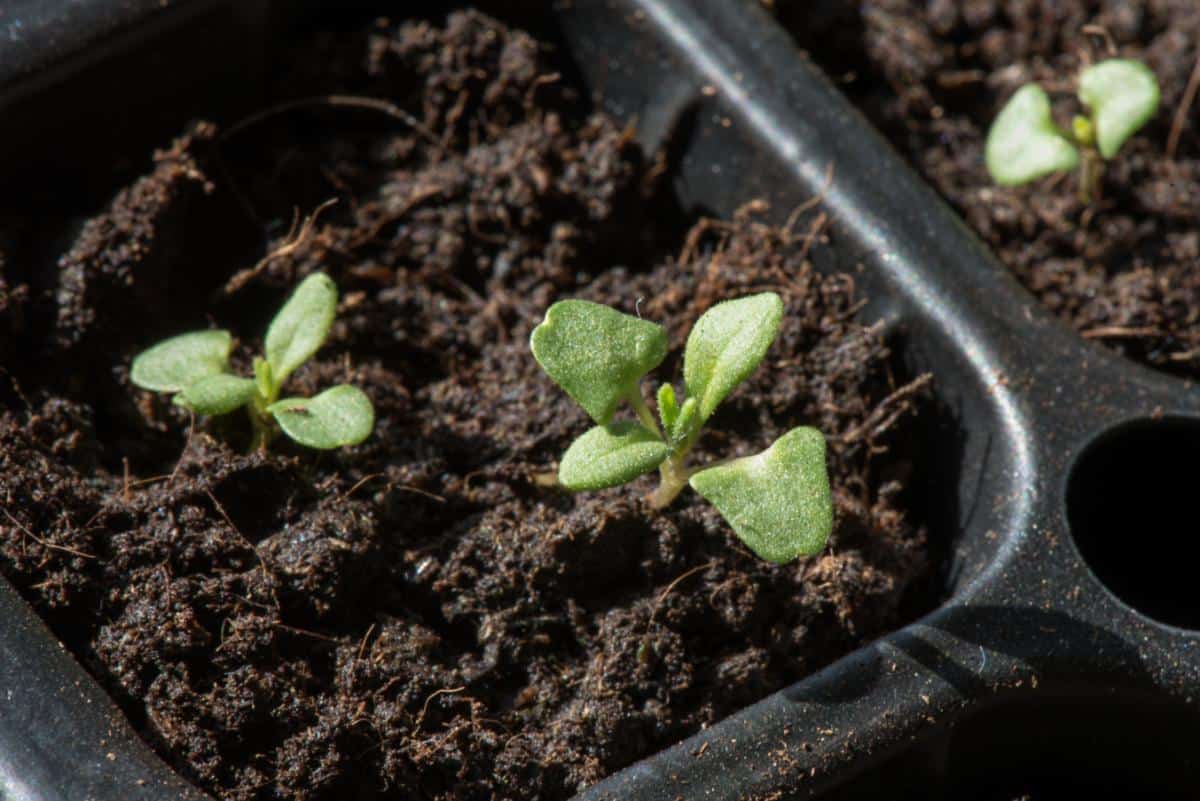
Perennial herbs often need cold stratification, too, so count them in while you’re setting up your cold-stratifying seeds.
The advice here is the same as above for perennial ornamentals and flowers.
Some herbs will germinate without cold treatment, but they are often very slow to do so, and the germination rate is often extremely low. You’d be amazed at how much of a difference a few weeks of cold treatment can make for successful herb seed starting.
(Some of the herbs on this list are used or treated as ornamentals, too. It doesn’t much matter how you plan to use them in terms of seed starting. What matters more is that you give them the start they need this month.)
Some herbs that are recommended for cold stratifying include:
- Lavender
- John’s Wort
- Mugwort
- Beebalm
- Lemon balm
- Arnica
- Chamomile
- Comfrey
- Mullein
- Sage
- Verbena
- Rosemary
- Catnip
3. Treat All Bulbs that Need Cold Stratification
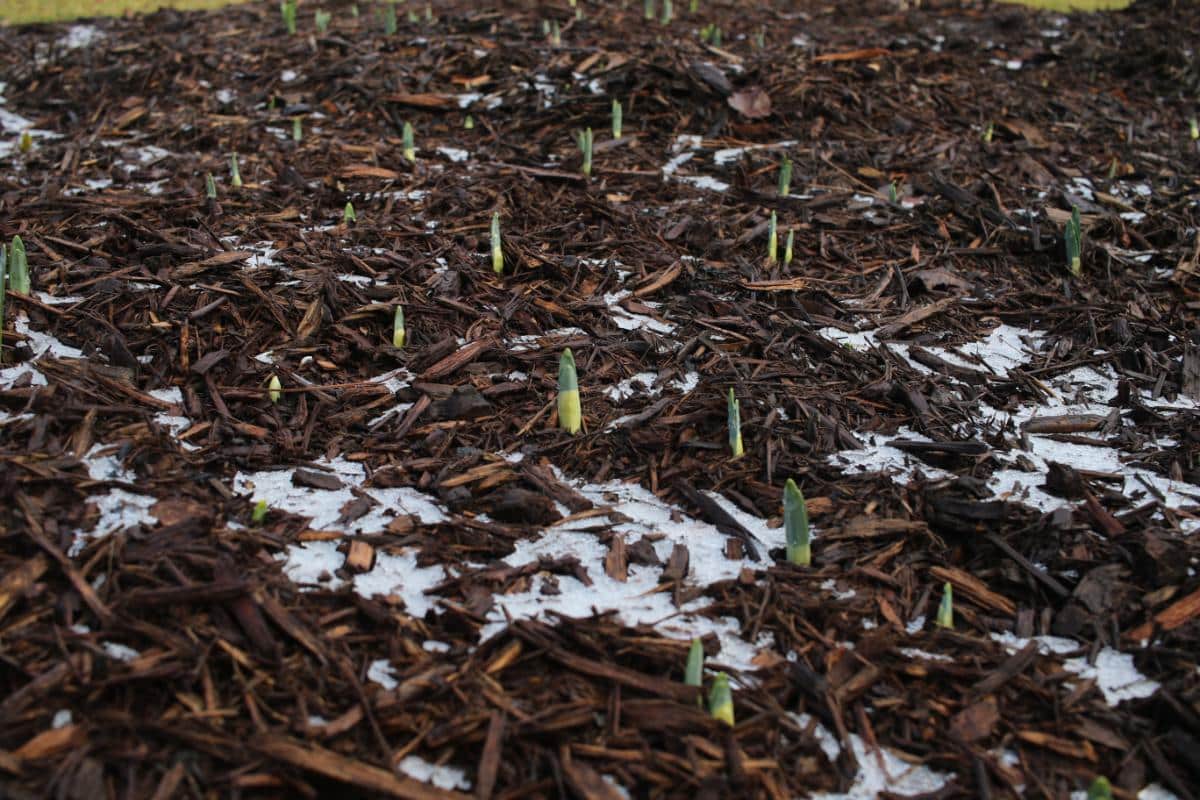
Spending the winter in freezing cold ground is essential for a lot of bulbs, believe it or not. It’s a lot like the cold stratifying that many seeds need.
The way we usually deal with cold treatment for overwintering bulbs is to plant them in the fall and let them spend the winter in the cold, hard ground.
If you have bulbs you wanted to plant that you didn’t get into the ground in the fall, you have a few options.
- If your ground is not frozen and you can dig into it, go ahead and plant those bulbs now. It’s a bit of a miserable job, but it will give them the cold treatment they need.
- Plant the bulbs in containers in the soil, moisten the soil, and set them outside. This acts a lot like growing in the ground and planting in the fall.
- Stick the bag of bulbs in the coldest part of your refrigerator for 6 to 8 weeks, then plant them in the ground as soon as it thaws.
There is some chance that you won’t get blooms on these bulbs this year, but there’s a strong chance you will. Your best chance for blooms this season is with option one or two.
Like cold stratifying seeds, this is something you’ll want to get done as soon as possible, so there are enough cold days and nights left to treat the bulbs. February is the time. (December or January would be good times, too, depending on when you’re reading this!)
Bulbs to plant or cold stratify:
- Any bulbs that would be planted in the ground in the fall in your area to overwinter outside
The following are the most popular of these:
- Daffodils
- Tulips
- Snowdrops
- Hyacinths
- Crocuses
- Lily of the Valley
- Alliums
4. Winter Sowing Perennials
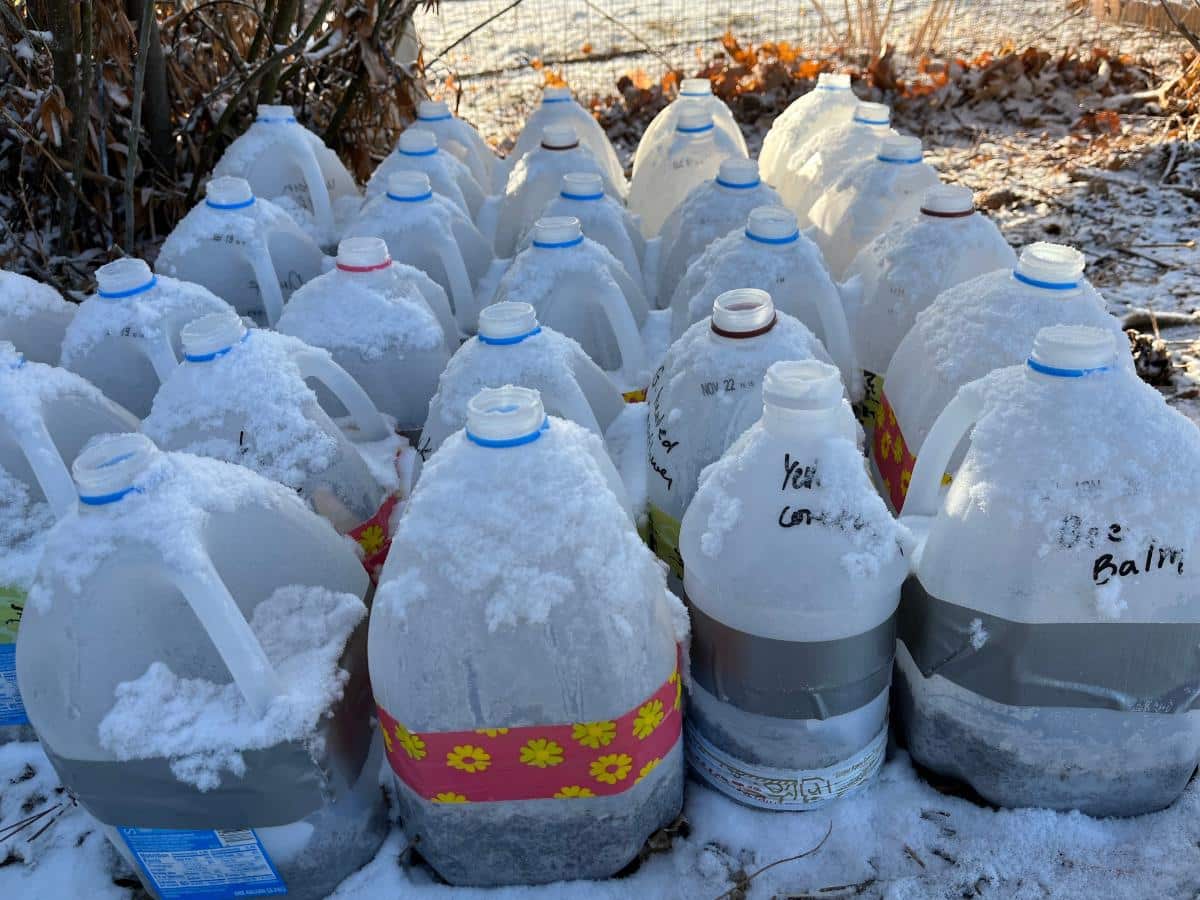
If you’re interested in winter sowing your perennial seeds, December through February is the prime time to do it. For perennials, the sooner, the better, so get them started this month.
Winter sowing is the method where you plant seeds in jugs and set them outside, and then the seeds come up in their own time in response to the triggers in nature. (See this link for a full Introduction to Winter Sowing.)
The reason winter sowing works so well for perennials is that it takes care of any cold stratification naturally, and the seeds grow and acclimate in sync with your seasons.
Any of the perennials or herbs listed in the cold stratifying seed sections above will do well with winter sowing, as well as the following:
Popular perennial Seeds Recommended for Winter Sowing:
- Yarrow
- Columbine
- Butterfly Weed (asclepias)
- Delphinium
- Coreopsis
- Dianthus
- Foxglove
- Blanket Flower
- Helenium
- Hollyhocks
- Joe Pye Weed
- Baby’s Breath
5. Edible Perennial Plants
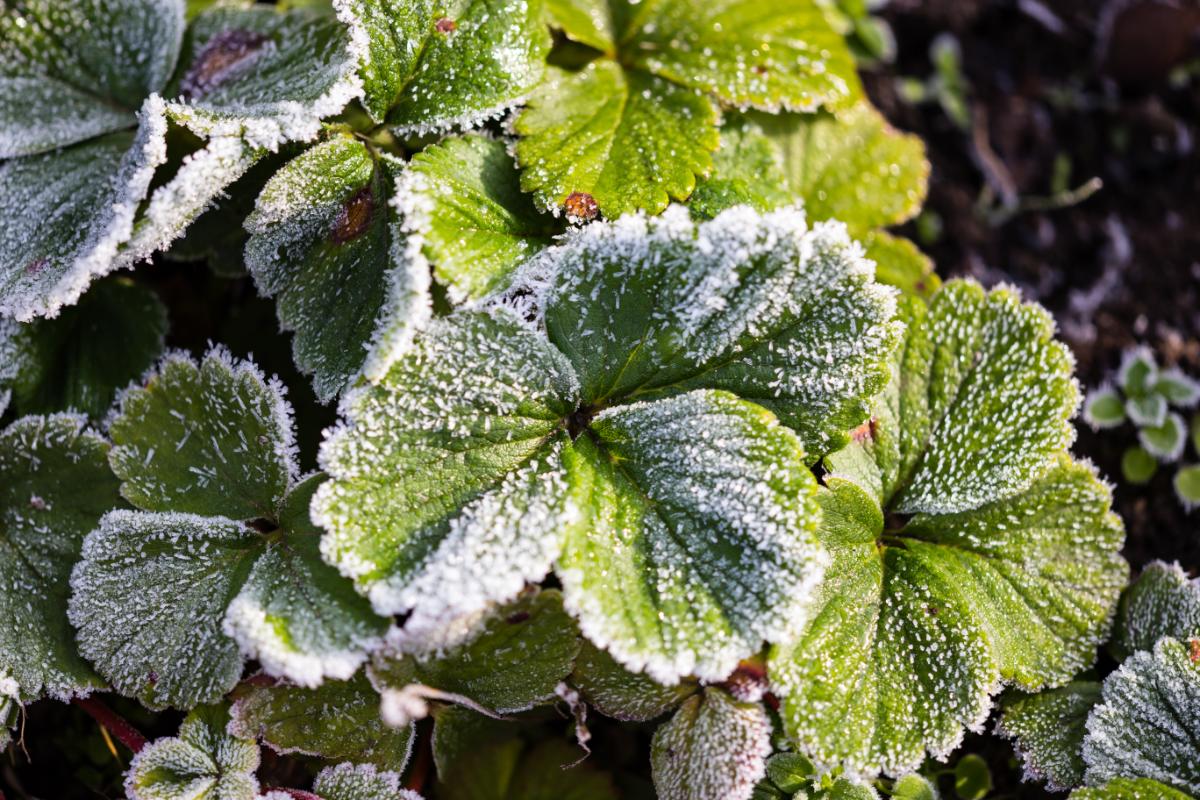
While you’re planting perennials in February to get them their early start, don’t forget about edible plants that are perennials, too. They have basically the same sorts of requirements as ornamental perennials, and they’re just as slow to start and slow to grow.
These work well for winter sowing, too.
Why not let your perennial beds do double duty for you? Edible perennial plants make excellent edible landscaping plants, too!
Edible perennial seeds/plants to consider:
- Artichokes (perennial in zones 7 through 10, annuals elsewhere, can be container grown and brought indoors in colder zones for winter to regrow as perennials year after year)
- Asparagus
- Rhubarb
- Strawberries (start these first—they need a long time to grow to transplant size)
6. Bulbs for Forcing and Flowering
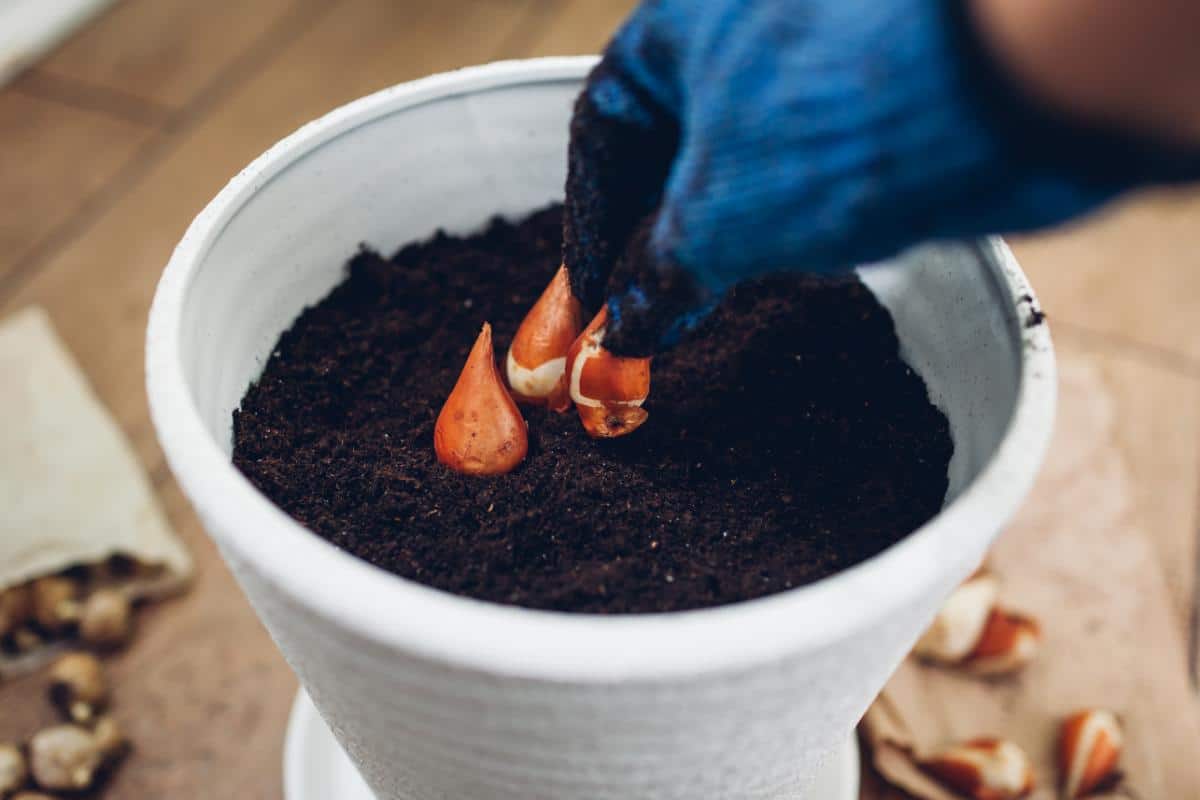
If you’ve chilled bulbs to force for early spring potted plants and vases, February is the time to plant them in their pots. This will give you flowers to enjoy in March and early April.
These bulbs all need cold treatment even to grow and bloom inside, so hopefully, you already have some chilling, but if not, you can often buy prechilled bulbs online. If they come pre-chilled, all you have to do is pot them up and let them grow.
The bulbs we often force for early indoor flowers are:
- Daffodils
- Tulips
- Hyacinths
7. Indoor Herbs and Perennials to Propagate for Growing Outside
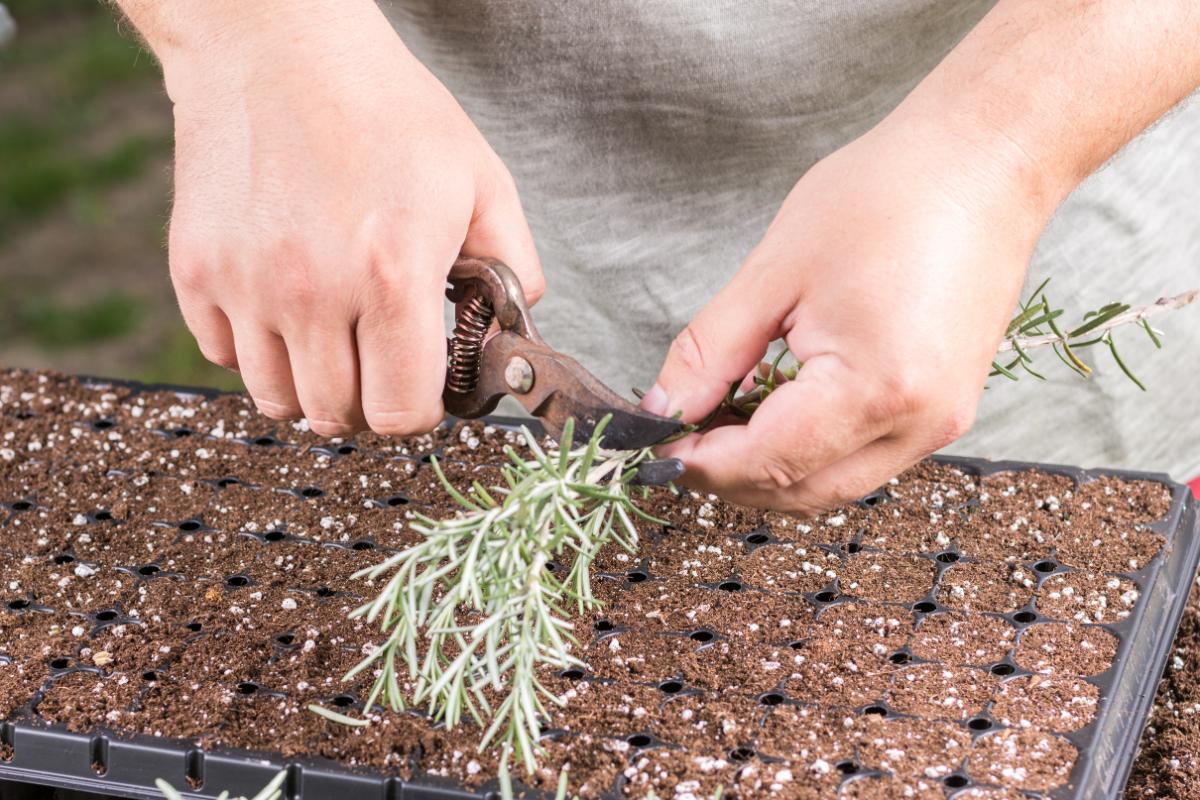
If you have herbs or potted perennials growing inside, you can take cuttings of them in February to start new plants for planting outside this spring.
Propagating herbs from cuttings is amazingly easy. One of the biggest advantages of starting cuttings is that rooted cuttings get a much faster start. They are also clones of the parents, so you’ll know exactly what you’re going to get.
They grow bigger transplants, too, since they have a head start on those started from seed. That equals more herbs from bigger plants in your summer herb garden.
Herbs to propagate from potted plant cuttings:
- Most potted herbs (odds are, whatever is growing in your kitchen now can be clipped and rooted to turn into more plants for outdoor transplanting)
- Rosemary
- Oregano
- Mint
- Basil
- Thyme
8. Dormant Cuttings for Propagation

Looking to expand plantings of berries, bushes, and shrubs that you (or a friend or neighbor) have growing in the yard? Rooting new plants from dormant cuttings is the perfect way!
In the winter, once plants are solidly in a dormant state, you can take hardwood cuttings of hardy shrubs, berries, trees, and bushes, root them in the soil, and plant them out in spring. This will give you a potted, rooted plant ready for transplanting once the weather breaks.
For many types of bushes, you can even just take the cuttings, store them in the refrigerator with moist paper towels, and stick them in the thawed ground in early spring. Many will root that way (elderberries are perfect for this!).
Dormant cuttings grow strong new plants because their first instinct will be to grow roots. Cool-weather (like in early spring) promotes root, not leaf, growth. If you bring winter cuttings inside, set them up in the soil, and keep them moist, they’ll break dormancy early and start rooting.
For this, you want to work with woody-stemmed plants, bushes, and shrubs.
Plants and shrubs that are recommended for rooting from dormant woody cuttings include:
- Blueberry
- Boxwood
- Forsythia
- Elderberries
- Roses
- Figs
- Grapes
- Hydrangeas
- Juniper
- Rose of Sharon
- Viburnum
- Forsythia
- Willow
9. Forsythia, Quince, and Other Cuttings for Forcing
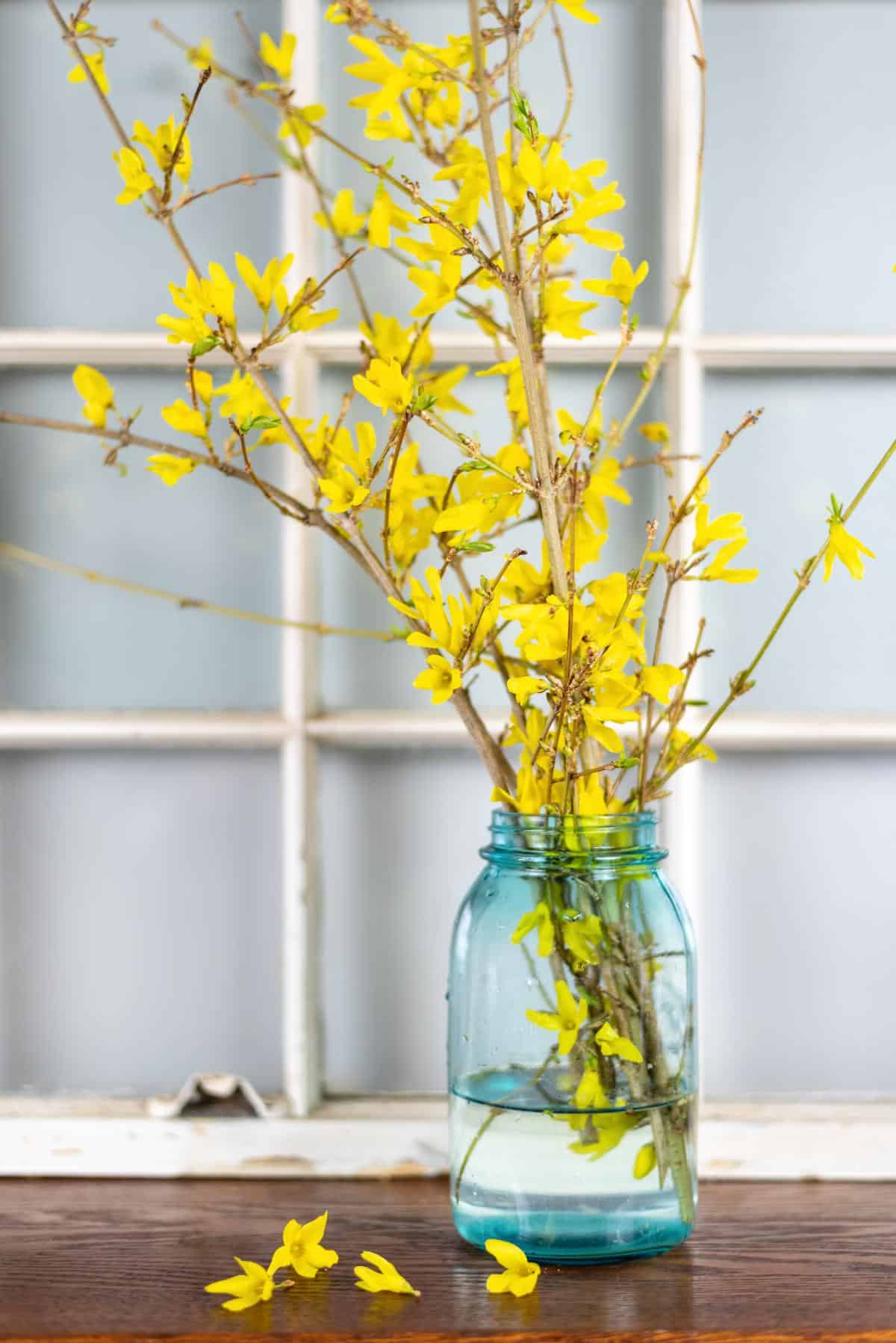
Forsythia and quince are two of the earliest plants to bring us color in the spring, but if you can’t wait, you can bring some cuttings indoors in February to force them. (And by February, who doesn’t need some new life and color to get us through to spring?)
Forcing forsythia and quince is similar to forcing bulbs, except you’re working with cuttings.
Forsythia, quince, and other spring-flowering shrubs set their buds for blooming in the fall. They need a cold stratification period, but that’s done by mid-January, so any time after that means the cuttings can flower if forced indoors.
February is perfect timing—the branches are cold-treated by now, and you’re ready for some promise of spring.
This isn’t hard to do; it’s mostly soaking, setting, and then setting your budding cuttings in vases. The one key is to keep the branches and buds moist the whole time.
Other early cuttings that can be forced indoors are:
- Pussy willows
- Witch hazel
- Cherry
- Crabapple
- Honeysuckle
- Fruit tree blossoms
It’s [Almost] Never too Early to Start Perennials
The great thing about starting perennials—whether from seed or by rooting and propagating—is that it’s almost never too early to start. This is especially true for flowering plants and ornamentals.
Annuals (like garden vegetables) require more careful timing because if you start them too early, they can get root bound and their blossoming and fruiting can be prematurely triggered. Not all annual vegetables can come back from that. Annual flowers are much more forgiving.
Perennials, on the other hand, need all the time you can give them to grow into large plants for spring transplants. It's not likely that you can plant these early enough to significantly or negatively impact flowering and production. They just get more time to grow bigger and stronger.
The only time that would be too early for starting perennials is if the plants were to sprout or break dormancy before winter sets in, which would have them actively growing at the wrong time. This is not very likely either because so many of them rely on the cold stratification that winter gives them.
Regardless, by February you are in the clear. January and February are both good months to start perennials because you have enough cold ahead of you for stratification, but you’re beyond the days that might be too warm too early and confuse the plants.
So, go ahead and put your perennial gardening hat back on and get a jump on the season (and save money) by starting your own perennials in February!

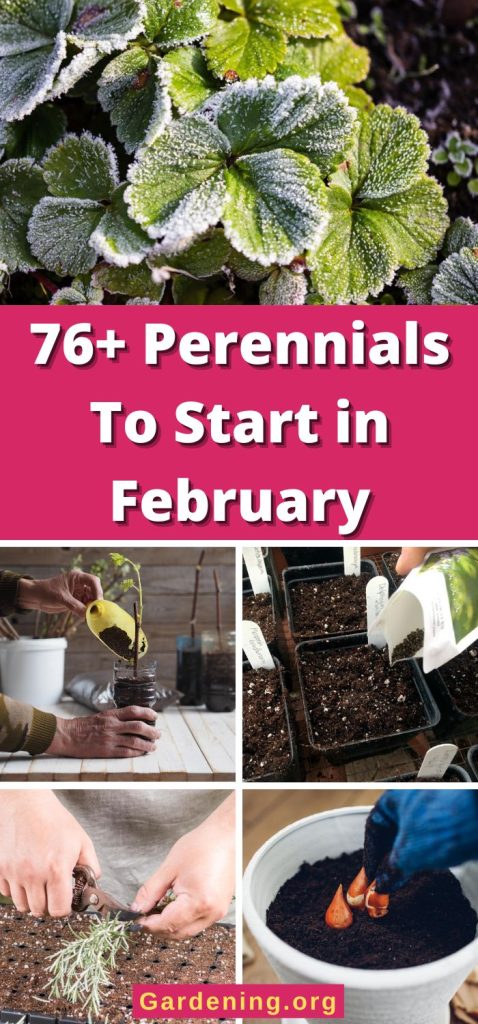
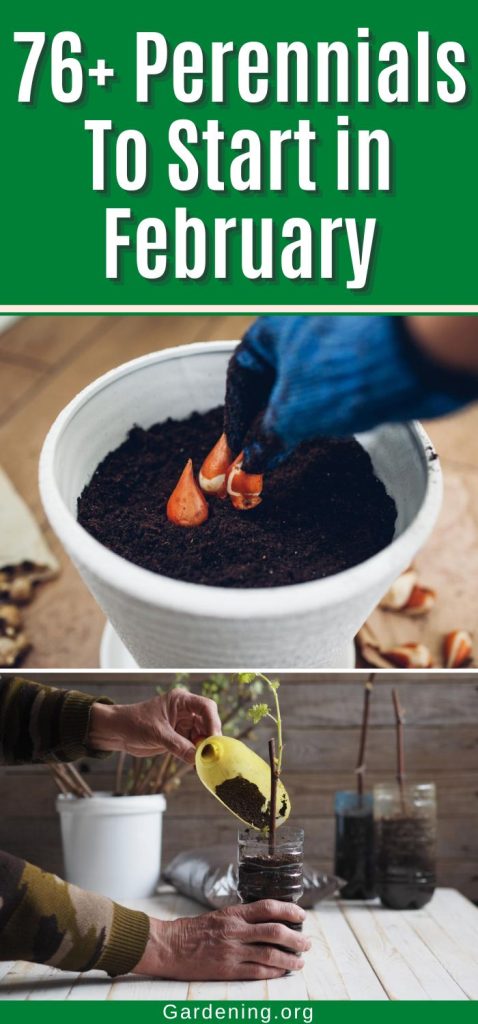
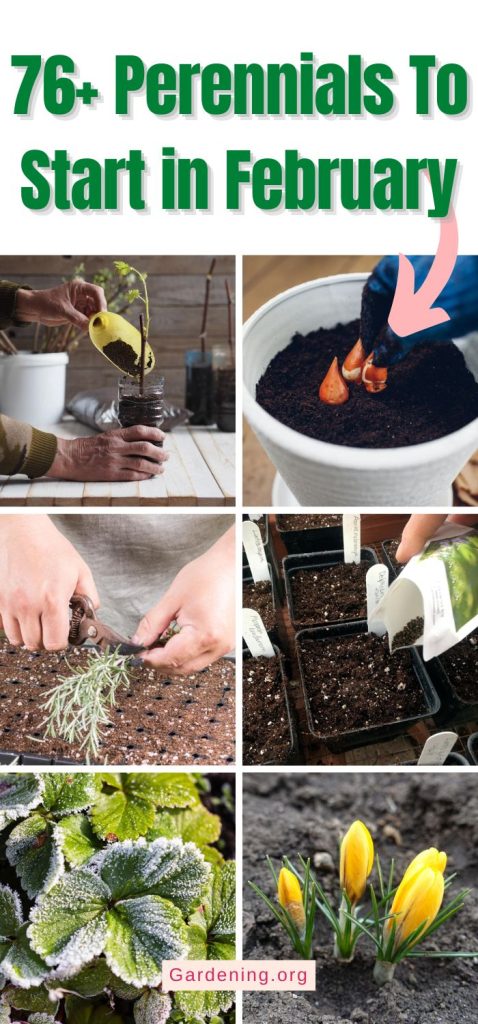
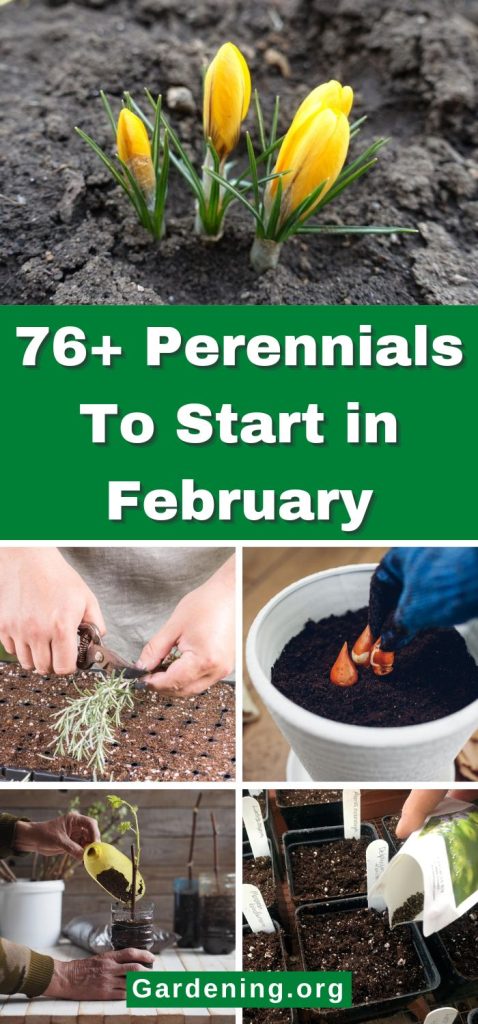
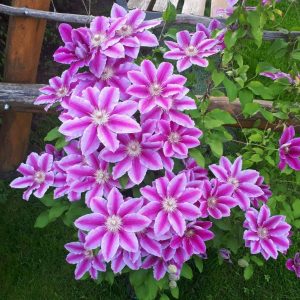
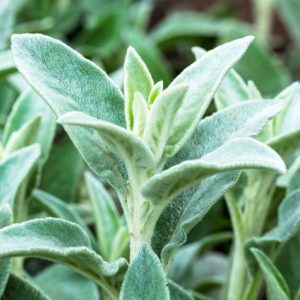


Dawn Dalyce
This is great ! I didn't realize that I should let Willows cold stratify before trying cuttings..but now that it's Feb. And my varigated Willows, and roses, and boxwood have had plenty of cold, I'm going to try some cuttings. My variegated willow branches aren't very big..certainly not pencil width...will they still grow if I take off around 8 or 10 inch cutti gs?
Mary Ward
Larger cuttings do better because they do not dry out and they grow roots proportionally, but in my opinion, it's worth a try! After all, all you have to lose are a couple of sticks and a little time, right? ON the other hand--you might just get some nice new plants!
I have started hundreds (thousands) of dormant woody elderberry cuttings. In my experience, even scrawny cuttings can make it, but I would suggest you start a few more than you think you need, just in case some fail. Try for the biggest you can get off the plant and put a plastic bag over the pot and cuttings while they root. Once they root you're on your way. It might take a little longer for those plants to get to a larger size, but it's free, so worth a shot!
Ginny Smith
My well meaning nongardening family members cut down dying trees or overgrown trees ( over 20 mature trees, decorative shrubs,and some vines)in the fall.
Any suggestions on how to start growing some of my trumpet vines or white mulberry tree that might help them recover that I did not intend to be cut down. Thank you,
Trying to be grateful and gracious but also recover some of my perennials.